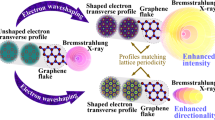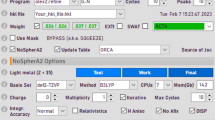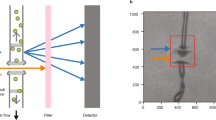Abstract
AS stated in an earlier communication1, quantum theory leads to the remarkable conclusion that the reflection of X-rays in crystals is of two types; first, the classical or unmodified reflections associated with the normal structure amplitudes of the crystal; and secondly, the quantum or modified reflections which arise when the vibrations of the crystal lattice are quantum-mechanically excited by the incident X-radiation. The direction and intensity of the reflections of the second kind have been considered theoretically in a recent paper2. It is shown that when the energy taken up by the crystal lattice is in the form of acoustic waves, the recoil of the photon is observable as a diffuse scattering of the incident X-radiation, while on the other hand, when the optical vibrations of the crystal lattice are excited, the resulting effect is a regular reflection of the incident radiation.
Similar content being viewed by others
Article PDF
References
NATURE, 145, 860 (1940).
Raman and Nath, Proc. Ind. Acad., 12, 83 (1940).
Raman and Nilakantan, Proc. Ind. Acad., 11, 398, and 12, 141 (1940).
Faxen, Z. Phys., 17, 277 (1923).
Zachariasen, Phys. Rev., 57, 597 (1940).
Author information
Authors and Affiliations
Rights and permissions
About this article
Cite this article
RAMAN, C., NILAKANTAN, P. Modified Reflection of X-Rays. Nature 146, 523 (1940). https://doi.org/10.1038/146523a0
Issue date:
DOI: https://doi.org/10.1038/146523a0



